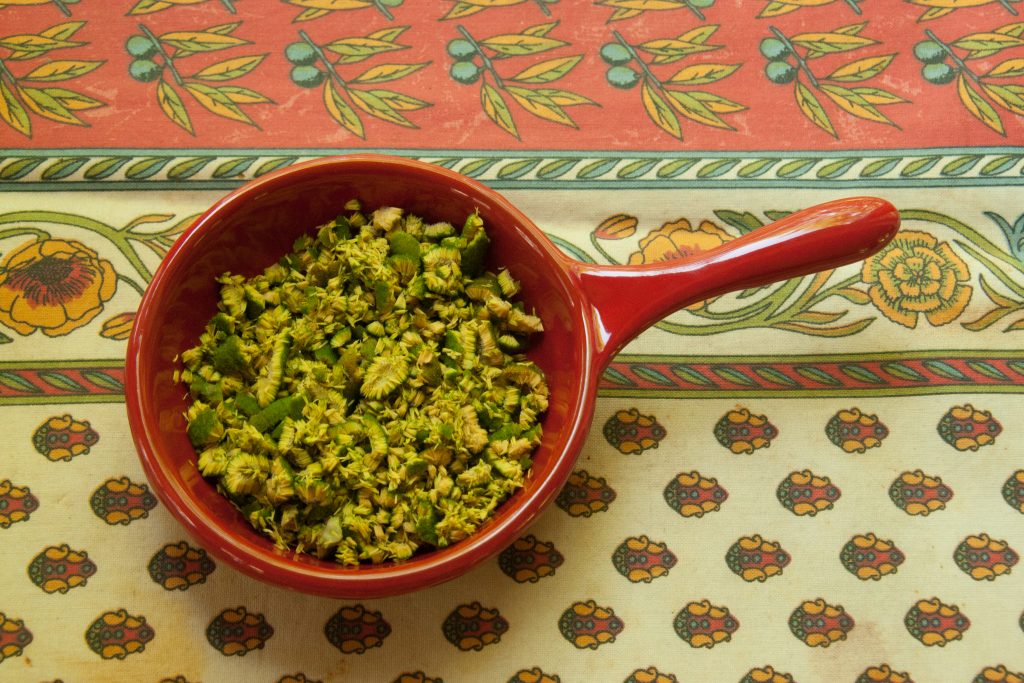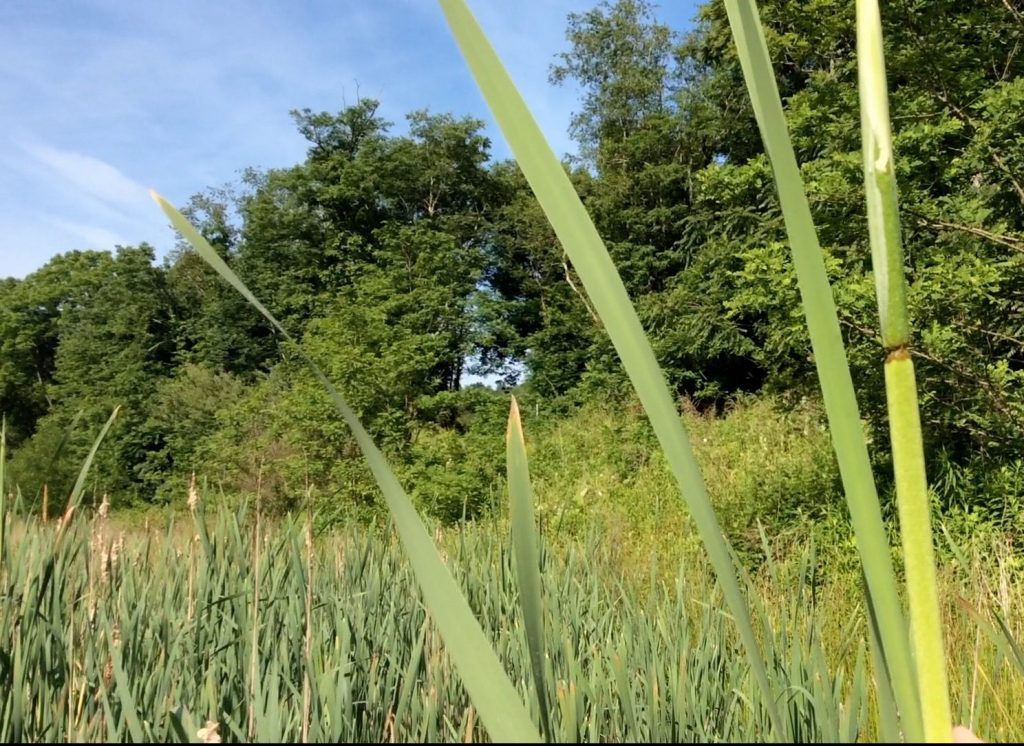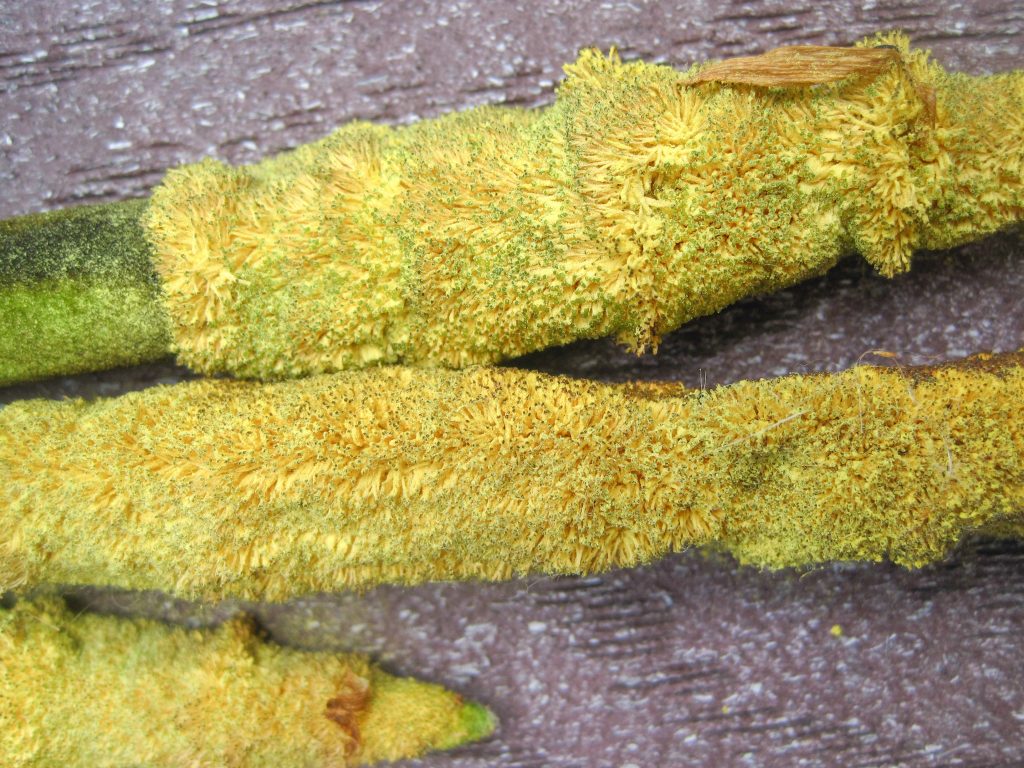
One of the first things every forager learns is that Euell Gibbons described cattails as “the supermarket of the swamp.”
It’s true, cattails have multiple, very tasty edible parts. (And they often grow in water, if not actual swamps.) I call the cattail an edible superstar, and of all its tasty parts, the immature male cattail flowers are my favorite. They’re easy to harvest and very versatile. Try eating cattail flowers in a simple preparation first, to get a feel for their flavor.
Before we talk about how to harvest and enjoy cattail flowers, let’s talk about how to forage for them safely.
1) The mature, cigar-shaped female flowers of cattails are unique in appearance, but immature cattails (before the flowers emerge) may resemble several inedible/toxic plants. Fortunately, the female flowers are persistent (unlike the male flowers), so look for last year’s dried flower heads in spring. They remain upright for months after they have shed their fluff in fall. The presence of last year’s “cat tails” is an excellent i.d. feature, and will help you locate this year’s immature flowers.
2) Cattails grow primarily in water, although I have found some in consistently moist soil. If that water isn’t clean, your cattails may not be safe to eat. Remember that runoff from highways, agricultural fields, and other places that spray herbicides and insecticides may drain into cattail patches, contaminating the water. Since the flowers themselves are held well above water level, you don’t have to worry about giardia or liver flukes, but it’s still a good idea to cook them. They’re safer and taste better that way.
3) The two most common types of cattail in North America are Typha latifolia and T. angustifolia. The species can be used interchangeably and often interbreed, so you don’t have to worry about identifying the exact species.
How (and When) to Forage for Cattail Flowers

Cattail flowers are held vertically, with male flowers positioned on top of female flowers. The dividing line between the two types of flowers is quite clear.
As the male flowers ripen, that portion of the cattail flower cylinder turns yellow, showing its pollen. It’s highly visible, even from a car whizzing down the road at 60 mph.

The pollen falls onto the female flowers below, and once pollinated, the female flowers begin their transformation into the iconic brown cigar shapes we know and love.

The immature male flowers are a tasty, naturally sweet vegetable, and one that’s easy to harvest in quantity if you have a good patch of cattails nearby. Alas, the window of opportunity for harvesting cattail flowers is small. Look for a swelling at the tops of the leaves, where the flowers are encased in protective sheaths. At this stage, they’re difficult to spot. Gradually the flowers emerge from their sheaths and are a little easier to find. Once the male flowers have ripened, flaunting their bright yellow pollen, your window of opportunity for harvesting flowers has closed. Of course you can go ahead and collect the pollen…but that’s another blog post.
To harvest your immature male cattail flowers, you can either snip off the entire flower, or just the male portion, right at the dividing line. Bring them home, remove any insects, rinse, then steam the flowers for about 10 minutes. Once they’re cool enough to handle, use a fork or your fingers to remove the male flowers from around the thin midrib to which they cling.

Reheat the flowers briefly (30 seconds in the microwave), then dress with butter and a little salt and pepper. The flavor is mild, and might remind some people of a cross between artichokes and corn. If you’ve had a bountiful harvest, serve the flowers simply, as a side dish. If you need to stretch your harvest, try this special cattail flower breakfast dish.
Cattail flower season is brief, and I look forward to it every year.
Leave a Reply